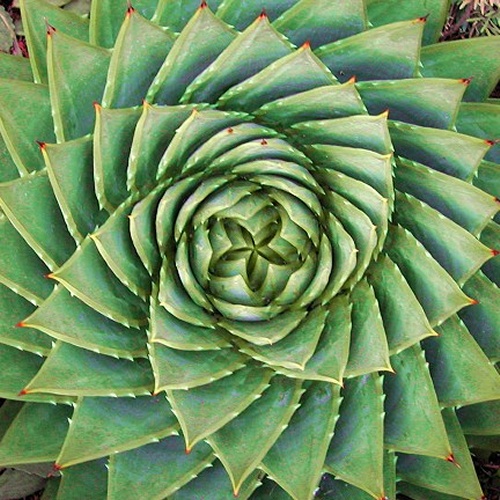Tips on growing Spiral Aloe
The leaves are fragile, so please unpack your plant carefully. Getting started -- They grow a large root system and should be given a fairly large, deep pot. Start your plant in a pot about 50% wider than the plant. Soil -- Use a very fast-draining mix. A typical soil mix is 1 part potting soil to 2 or 3 parts pumice rock or perlite. If you tend to over-water your plants, or if heavy rainfall is unavoidable, use 3 or more parts pumice/perlite to each part of potting soil. Don't add lime to the mix. Mix in some granular fertilizer that contains micronutrients. Don't give liquid fertilizer right after transplanting. Watering - Aim to keep the keep the roots "moist but not wet" most of the time. Avoid letting the soil dry out completely, but don't keep it constantly saturated either. If the leaves appear to lose their plumpness, the roots may be too dry. If you're unsure if they're moist enough, stick a moisture meter deep into the root zone. Light -- It prefers full sun in cooler conditions. In hotter climates, it may need some afternoon shade. The leaves might burn or bleach if the sun is too strong, or if the hours of sun you give it is increased too quickly. Once the leaves start spiraling, don't rotate the pot - keep the plant tag in the same orientation to the sun, to retain leaf symmetry. Indoors, in winter, it may need strong supplemental lighting to keep the spiral nice and compact. Climate -- The first year, try to keep it between about 45 degrees and the low 80s (7-28°C). Older plants are more tolerant of a wider temperature range, especially if nights are cool, but they never enjoy hot days. In temperatures over 82°F (28°C), keep the pot shaded, perhaps by placing it inside a second pot made of clay. If you don't like the look of that, another option is to use an oversized pot. Keep the plant well-watered in hot conditions. Mature plants reportedly can handle a few degrees of frost, as well as some snow, although younger plants should be protected from freezes. Outdoors, angle the pot toward the sun 20-30 degrees so rain can drain off the plant. Fertilizer - Feed only during periods of active growth, which is when temperatures are between about 45-82°F (7-28°C). Use an all-purpose fertilizer that contains micronutrients, following the instructions on the package. It's normal for the outer row of leaves to turn brown and shrivel up as the plant grows. The plant reabsorbs the liquid from these older leaves, so wait to remove them until they are paper thin. If all the leaf tips on the plant turn brown (not just the outer leaves), the plant might need a larger container, or it might be stressed from another cause, like high heat or pests under the leaves. Pests -- Watch for any pests that may affect your other plants. Check occasionally under the leaves for aphids. Try using insecticidal soap spray before using harsher remedies. Transplanting -- Repot to a bigger container whenever the plant is about as wide as the pot. It's good to use a pot at least as tall as the plant is wide. While it can tolerate a shorter pot than that, it will appreciate the extra room, especially in warmer conditions. There is no harm in overpotting. After about 3 years, it can be grown in a half whiskey barrel, or about a 20-25 gallon container. Again, larger is better in hot climates. If you have any questions, feel free to contact me. Happy gardening! - Jeff Strange Wonderful Things
|
|||||||||


